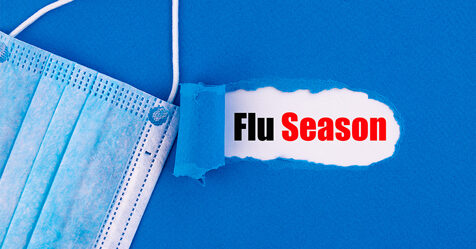On the cusp of the second decade of the 21st century, infection prevention specialists were pleased with the progress facilities had made against the threat of both health care-associated
infections (HAIs) and deaths attributed to antimicrobial resistance.
Between 2012 and 2017, deaths from antimicrobial resistance decreased by 18% overall and nearly 30% in hospitals, according to a special report the U.S. Centers for Disease Control and Prevention (CDC) released last summer regarding the impact of COVID-19 on antimicrobial resistance. Similarly, the CDC’s 2018 HAI progress report found that C. difficile (C. diff) infections
decreased by 12% in acute care hospitals, central line-associated bloodstream infections (CLABSIs) decreased by 9%, and catheter-associated urinary infections (CAUTIs) decreased by 8%. The CDC credited this progress to improvements in infection prevention and control efforts and better use of antimicrobials.
Unfortunately, much of this progress was short-lived. A few years later, the COVID-19 pandemic pushed health care facilities to their breaking points, resulting in increased antimicrobial use as
well as difficulty in following infection prevention and control guidance. These challenges predictably lead to an increase in health care-associated, antimicrobial-resistant infections in U.S. hospitals, with a 15% increase in both resistant hospital-onset infections and deaths during the first year of the pandemic.
Also in the special report, the CDC identified significant increases in many health care-associated pathogens, including carbapenem-resistant Acinetobacter, extended-spectrum
beta-lactamase producing Enterobacterales, vancomycin-resistant Enterococcus, and drug-resistant Candida.
The presence of more and sicker patients, who required more frequent and longer use of catheters and ventilators, might have increased the risk of HAIs and the spread of pathogens, especially when combined with personal protective equipment (PPE) and lab supply shortages, reduced staff, and longer lengths of patient stays.
“All of these factors created a challenging recipe for effective infection prevention. We had seen improvement in recent years, then our progress stalled and slipped backward,” said Katelyn
Harms, infection prevention program manager in the Performance Improvement Department at UnityPoint Health-Meriter Hospital in Madison, Wisconsin. “But we have seen progress in the
past and we are optimistic we can make progress again.”
The war on HAIs
Every day, approximately one in 31 U.S. hospital patients and one in 43 nursing home residents contract at least one HAI, according to the CDC. Many of these infections are caused
by bacteria—such as C. diff and methicillin-resistant Staphylococcus aureus (MRSA)—that can spread to people via health care facility surfaces. Other HAIs can result from medical procedures and treatments, such as CLABSIs, CAUTIs, ventilator-associated events (VAEs), and surgical site infections (SSIs). However, even the HAIs originating from treatment can benefit from a
clean environment.
“All HAIs can be positively impacted by good cleaning practices; we rely heavily on [EVS] staff to give us a solid foundation,” said Harms. “Issues like the prevention of surgical site infections
depend on a clean environment.”
The CDC’s 2021 National and State Healthcare-Associated Infections Progress Report, which was released in November 2022, revealed HAI rates across four health care settings: acute-care
hospitals, critical-access hospitals, inpatient rehabilitation facilities, and long-term acute-care hospitals. The report highlighted a 14% increase in hospital-onset MRSA bacteremia (the presence
of bacteria in the bloodstream) and a 3% decrease in hospital-onset C. diff infections between 2020 and 2021.
“Environmental disinfection plays a big role in managing MRSA,” said Benjamin Galvan, director of infection prevention at HCA Florida South Tampa Hospital in Tampa, Florida, and a member
of the national communications committee for the Association for Professionals in Infection Control and Epidemiology (APIC). “Bacteria multiplies very rapidly and can live on surfaces
indefinitely. If we are not cleaning or disinfecting properly, if we are not keeping the bioburden low, then we are increasing the possibility of spreading pathogens to our patients through contaminated hands and surfaces.”
Managing the winter trifecta
The most vulnerable patients—the elderly and those with serious illnesses and compromised immune systems—are most likely to contract HAIs. Although hospitals currently do not have
as many critically ill COVID-19 patients, they still have their hands full with respiratory illnesses, which are back after a two-year lull.
“Winter is always respiratory viral season. This winter, we’re seeing everything we have had in winters before—respiratory syncytial virus (RSV) and influenza (flu)—and adding COVID-19 into
the mix,” said Galvan.
After two winter seasons with mild flu rates due to COVID-19 mitigation practices such as social distancing and masking, rates eventually went up.
“Last year, influenza was peaking at a different time; we saw it in the late spring and the early summer,” Galvan said. “A lot of that likely had to do with activities in our communities
opening up—people feeling more comfortable about getting out of their homes, taking their masks off, and participating in normal pre-pandemic activities.”
Community members can prepare themselves for the “tripledemic” of COVID-19, flu, and RSV by following tried-and-true practices.
“What we can do is what we’ve always done: get the flu vaccine, get COVID-19 boosters, wash our hands, stay home if we’re sick, and if we have the option to put a mask on, do it,” Galvan said. “All of these were practices we were already doing, and they continue to apply, pandemic or no pandemic.”
Health care staff can deal with the effects of the tripledemic by continuing the focus on cleaning and hand hygiene. Galvan pointed to three factors that have contributed to inefficient cleaning the
past few years. “When we’re understaffed, we see the quality of our cleanliness go down—that is just a fact,” he said. “Throw in supply chain and education issues, and you have a trifecta. Maybe
the cleaning staff are using products that require a longer dwell time. Maybe the hospital is using contractors who may not be up to date and trained on your facility’s cleaning standards.”
Harms concurred that staff shortages have affected hospital cleaning practices. “We’ve struggled for several years now to maintain enough staff. The [workers] we have need to focus
their cleaning efforts on prioritized areas, but that leaves gaps,” Harms explained. “We rely so heavily on EVS and have been onboarding new staff, but training them has been a challenge in our fast-paced environment.”
A renewed focus on hand hygiene
A critical component of infection prevention—hand hygiene—has sometimes fallen by the wayside. Galvan said HCA Florida South Tampa Hospital has always placed a strong focus on
hand hygiene. When compliance is sketchy, he suggests implementing a culture that praises positive activity rather than just punishing poor performance. Galvan also recommendsconsidering factors that are leading to poor compliance, such as hand soap or sanitizer that causes skin irritation, soap and sanitizer dispensers that are placed in inconvenient areas,
or dispensers that are always empty.
“It really has to do with the culture we are trying to build, one in which people coach each other and ask facility-specific questions about noncompliance,” he said.
Keeping an eye on Candida auris
Another practice that faltered during the pandemic was surveillance of emerging infections, such as Candida auris (C. auris). A fungus that grows as yeast, C. auris was first described in 2009 after it was discovered in a patient at a Japanese hospital. The pathogen has spread across Asia and Europe, and first appeared in the United States in 2013.
C. auris can cause invasive candidiasis (fungi or yeasts in the blood) and can also affect the central nervous system and internal organs. Treatment is complicated as the pathogen is resistant to
multiple drugs.
Screening for C. auris colonization was limited during the height of the pandemic, according to the CDC. Although it has been most common in long-term care facilities for people with severe
medical conditions, outbreaks of the fungus were reported in COVID-19 units of hospitals.
“I have seen [C. auris] in previous facilities: large teaching hospitals and long-term care facilities,” Galvan said. “Its mortality rate can be upwards of 50%, and it is on the radar for a lot of
states. Florida is definitely one of the hot spots.”
“We are doing surveillance for C. auris and have not identified any new cases in our hospital,” Harms said. “Nationally, there was a 60% increase in all cases since the beginning of the pandemic.”
Harms explained that many staff members in the CDC’s antibiotic resistance (AR) lab network were redeployed to COVID-19 tasks during the pandemic. As a result, infection prevention specialists nationwide received less data on C. auris surveillance. “We use this data to set targets and drive solutions,” she said.
Infection control beyond 2023
With what we hope is the tail end of the COVID-19 pandemic in the rearview mirror, health care infection prevention specialists have set their goals for the coming years. At HCA Florida South
Tampa Hospital, Galvan hopes to return to business as usual.
“I think the main focus is getting back to the nuts and bolts of infection prevention,” Galvan said. “During the height of the pandemic, protocols had to be changed due to staffing issues
and supply chain shortages. A lot of those changes lead to behaviors and practices that weren’t normal for us.” As staff was used to doing things the “shortcut, COVID-19 way,” Galvan said the
hospital is moving staff away from those habits and back to following proper infection control procedures at all times.
At UnityPoint Health-Meriter Hospital, Harms stressed the importance of continually monitoring global infectious breakouts. “Monitoring of global concerns is an important task that is
now designated to every infection prevention department to track emerging pathogens or possible new pandemics,” she said. “We’ve seen that importance not only from COVID-19, but
monkeypox, zika, and others. Localized issues can become global concerns quickly.”




